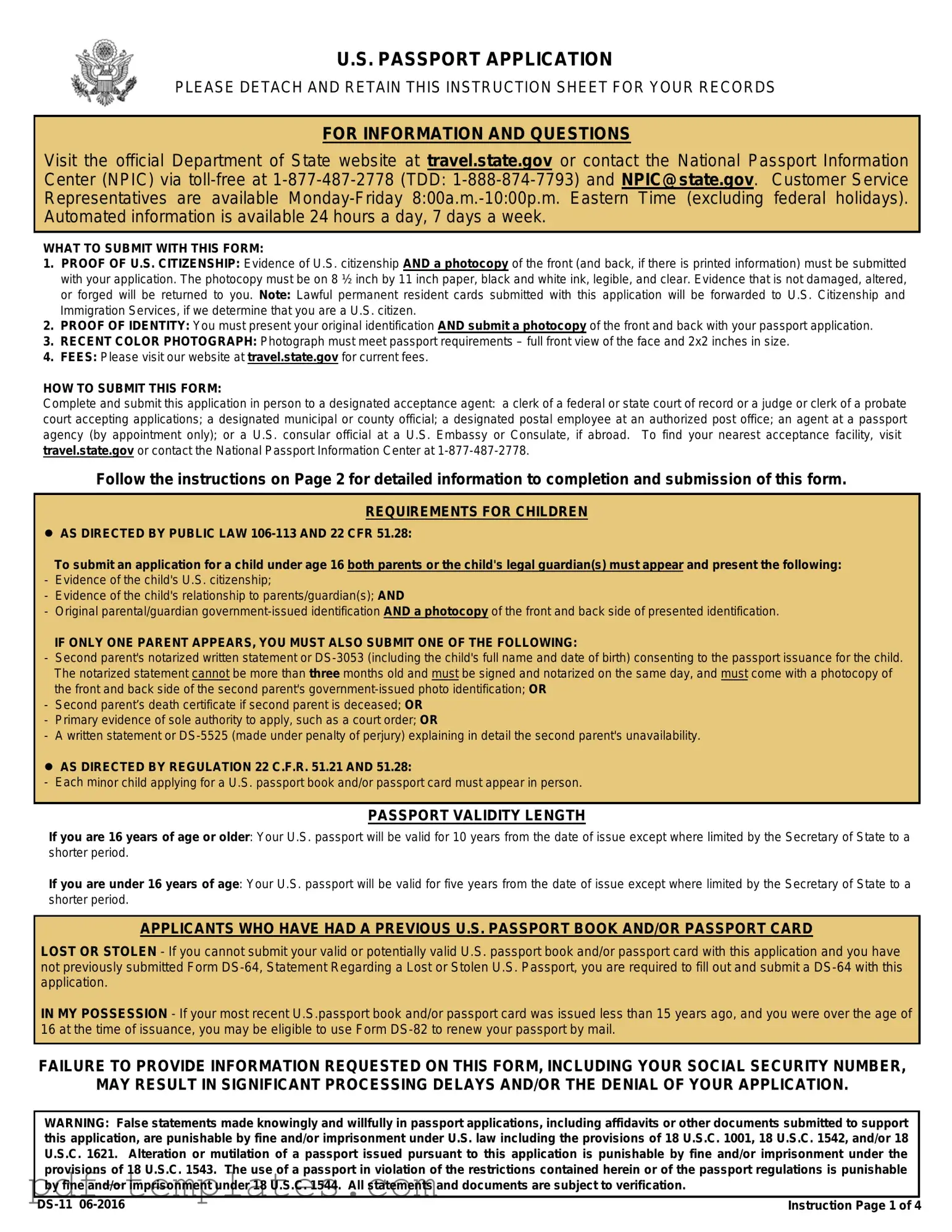The DS-11 U.S. Passport application form is similar to the Form I-90, Application to Replace Permanent Resident Card. Both documents require personal information, such as name, address, and date of birth, to verify the identity of the applicant. Just as the DS-11 is used for obtaining a passport, the Form I-90 is essential for individuals seeking to renew or replace their green card. Each form also mandates proof of identity, which may include government-issued identification or documents that establish residency and legal status in the United States.
Another document that resembles the DS-11 is the Form N-400, Application for Naturalization. This form is used by lawful permanent residents who wish to become U.S. citizens. Like the DS-11, the N-400 requires detailed personal information and background data. Both forms also necessitate supporting documents, such as photographs and evidence of residency. Additionally, applicants for naturalization must demonstrate good moral character and knowledge of U.S. history and government, paralleling the DS-11's requirement for applicants to provide proof of citizenship.
The Form DS-82, Application for a U.S. Passport by Mail, shares similarities with the DS-11 as well. While the DS-11 is for first-time applicants or those who do not meet specific criteria, the DS-82 is designed for individuals renewing their passports. Both forms collect essential personal information and require applicants to submit a recent passport photo. The main difference lies in the eligibility criteria; the DS-82 can only be used by those who meet specific conditions, such as having an existing passport that is undamaged and issued when the applicant was age 16 or older.
The Form I-130, Petition for Alien Relative, is another document that bears resemblance to the DS-11. This form is used by U.S. citizens and lawful permanent residents to establish a relationship with a foreign relative. Both forms require detailed personal information, including names, addresses, and dates of birth. Furthermore, both forms require supporting documentation to substantiate claims made within the application, such as proof of relationship in the case of the I-130 or proof of citizenship for the DS-11. In both cases, the government assesses the information provided to determine eligibility.
For those considering a transaction involving mobile homes, it's important to have a properly drafted Mobile Home Bill of Sale document. This legal form can be accessed through the following link: essential Mobile Home Bill of Sale resources.
Lastly, the Form DS-5504, Application for a U.S. Passport Name Change, is akin to the DS-11 in that it also serves a specific purpose related to U.S. passports. The DS-5504 is used when individuals wish to change their name on their passport due to marriage, divorce, or other legal reasons. Both forms require personal information and supporting documents, such as a marriage certificate or court order for name changes. While the DS-11 is primarily for first-time applicants, the DS-5504 focuses on updating existing passport information, yet both forms share the goal of ensuring accurate identification for travelers.
